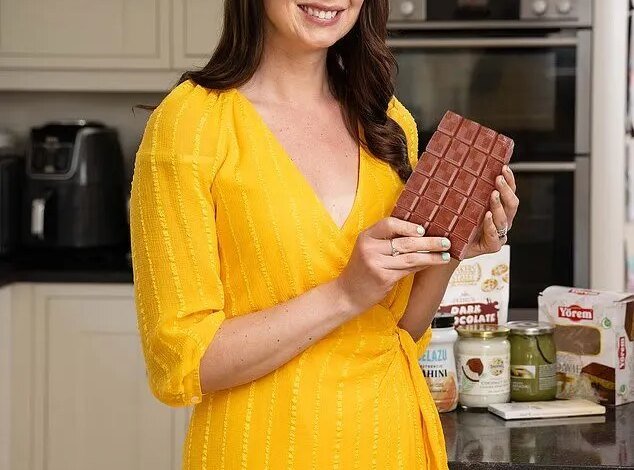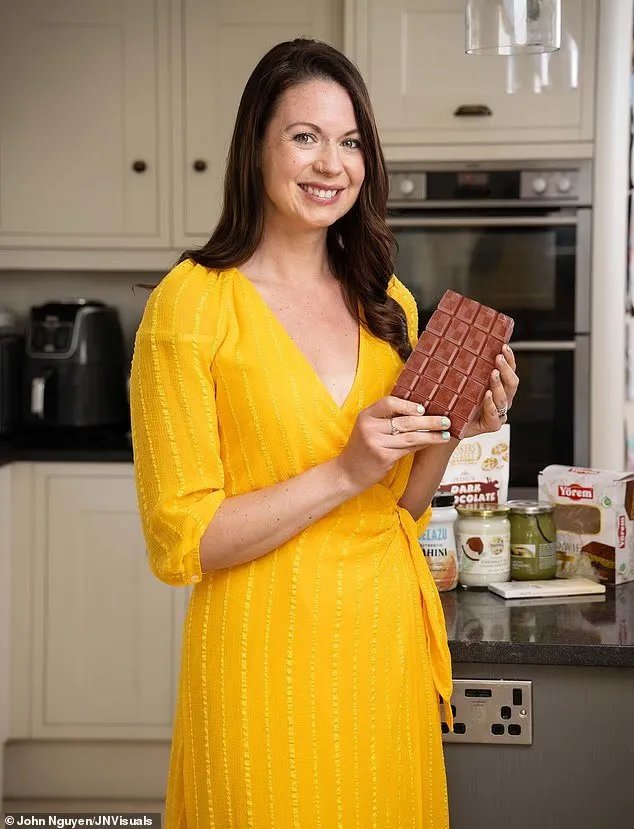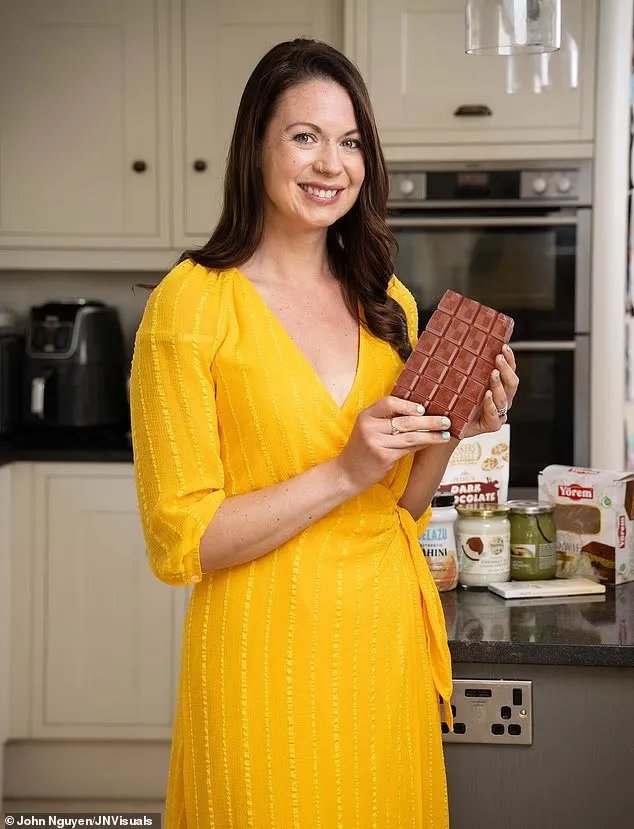Is your favourite chocolate treat really a FAKE? The cu…

Is your favourite chocolate treat really a FAKE? The cu…

uaetodaynews.com — Is your favourite chocolate treat really a FAKE? The cult classics that no longer have enough cocoa to count… and those that do
Few food obsessions come close to this country’s addiction to chocolate.
In a single year, we eat around 8.2kg each, spending an average of £75.45 per person and generating a huge £8.44 billion for the UK economy.
The average Briton consumes 7,560 chocolate bars and 8,316 chocolate biscuits over their lifetime.
But what if all that chocolate we’re hooked on isn’t actually chocolate at all?
This week, shocking reports revealed that several of our best-loved treats now contain so little cocoa that they can no longer be called ‘chocolate’.
Club and Penguin bars are among the pretenders which must be labelled ‘chocolate-flavoured’, as they comprise more vegetable fats (namely palm oil and shea oil) than cocoa solids – the ingredient that gives chocolate its rich flavour, texture and taste.
According to UK regulations, which have been in force since 2003, a product must contain a minimum of 20 per cent cocoa solids to call itself ‘milk chocolate’.
This is different elsewhere; in the EU it’s 25 per cent, while in America it’s just 10 per cent. Dark chocolate has to contain at least 35 per cent cocoa solids.
This week, shocking reports revealed that several of our best-loved treats now contain so little cocoa that they can no longer be called ‘chocolate’. Pictured: Sarah Rainey holding a bar of chocolate
In a bid to cut costs, big manufacturers are tempted to use the minimum cocoa solids permitted, bulking out our favourite biscuits and bars with sugar, other fats, emulsifiers and artificial flavourings instead.
This has got worse recently, because poor cocoa harvests have caused a spike in prices.
‘In Ghana and the Ivory Coast, where 70 per of the world’s cacao comes from, cocoa farmers have been hit by plant diseases, such as swollen shoot virus disease, which eventually kills the trees,’ explains chocolate connoisseur Kerry Witt, founder of Hampshire-based Chocolate by Miss Witt.
According to recent data from the Office for National Statistics, the price of cocoa is rising five times faster than that of other groceries.
As this has fed into production costs, manufacturers have changed the ingredients in their bars and biscuits, substituting expensive cocoa with a combination of vegetable fats and oils.
This, says industry expert Jennifer Earle, who has been hosting chocolate tastings and tours for 20 years, can change the taste, texture and ‘melt profile’ – how chocolate liquefies – of the product we buy.
‘The texture will be different, most likely a bit oilier, but it would be very subtle,’ she explains, adding that ‘just a 1-2 per cent reduction in cocoa… would lead to millions of pounds of savings.’
True chocoholics may notice a sweeter, more artificial taste that ‘leaves a drier feeling in your mouth’ than real chocolate.
So can you tell the difference between real chocolate – and chocolate flavour? We investigate the chocolate fakery lurking in plain sight on our supermarket shelves…
Club and Penguin Bars
The iconic lunchtime biscuits have had to change their packaging to omit the word ‘chocolate’, as a result of changing ingredients in their chocolatey coating.
Club – which comes in orange, mint and salted caramel biscuits – is now described as a ‘biscuit bar with a chocolate-flavour coating’.
This coating, which makes up 49 per cent of the biscuit, contains sugar, vegetable oils (palm and shea), cocoa mass, dried whey, skimmed milk, emulsifier and natural flavouring.
The same is true of Penguins, now described on the packaging as a ‘chocolatey sandwich biscuit and smooth chocolate flavour cream’.
The chocolate-flavour coating comprises just 29 per cent of the overall biscuit.
VERDICT: FAKE
Maryland Cookies
Technically, the word ‘chocolate’ still appears on the packaging of these popular cookies, but the chocolate used is a compound made of several non-cocoa fats.
The main ingredient in the chips is sugar, followed closely by three types of vegetable fats (sustainable palm, shea and sal, a fat extracted from an Indian tree and high in saturated fatty acids).
According to some definitions, this is far from authentic chocolate – and not what shoppers might expect from a choc-chip cookie. ‘Maryland biscuits don’t contain real chocolate chips and haven’t for a long time,’ says Jennifer Earle.
VERDICT: real (but only just)
Wagon Wheels
There is no mention of the word ‘chocolate’ on the distinctive packaging of Wagon Wheels.
Instead, manufacturers Burton’s Biscuit Co insist they’re ‘epic’ and ‘legendary’. Look at the small-print on the back, however, and you’ll find the truth: ‘Biscuit filled with mallow and covered in chocolate-flavoured coating.’
This coating comprises 24 per cent of each biscuit and is made up of sugar, three types of vegetable fat (sustainable palm kernel, sustainable palm and shea), dried whey, fat-reduced cocoa powder and emulsifiers.
VERDICT: FAKE
Kit Kats
Nestle’s wafer biscuits are covered in real chocolate, but they don’t list the exact percentage of cocoa solids on their packaging.
This, says Jennifer Earle, suggests it’s not very high. ‘I would guess that it’s exactly – or very close to – the minimum,’ she says.
Each two-finger packet contains 66 per cent milk chocolate, which is still a decent amount; although customers have complained in recent years that the bars are getting smaller.
VERDICT: real
McVities White
Unlike the milk and dark varieties, which have ‘chocolate’ on their packaging, McVitie’s white digestives do not.
This is explained in smaller font on the back of the packet – they are ‘wheatmeal biscuits with a white chocolate flavour coating’.
The regulations surrounding white chocolate state a product must contain a minimum of 20 per cent cocoa butter, but no cocoa solids. White digestives don’t appear to contain any cocoa whatsoever – just sugar, vegetable oils, milk, flavouring and emulsifier.
VERDICT: FAKE
Dairy Milk
‘Dairy Milk hasn’t had the word chocolate on the packaging for a while now,’ explains Jennifer Earle.
This is because its cocoa content is 23 per cent – technically still classed as ‘chocolate’ in the UK, but not so in the EU, where the minimum is 25 per cent.
By avoiding the word on its label, it can be sold across Europe without changing the bar’s packaging. The brand has become so synonymous with that moreish, creamy chocolate taste that consumers don’t seem to notice.
VERDICT: real (in the uk)
Blue Riband
Nestle’s Blue Riband biscuits have been around since 1936 and pride themselves on containing just 99 calories each.
The packaging clearly states that the crisp wafer bars are covered in ‘real milk chocolate’, which amounts to 47 per cent of each one.
Both vegetable fats and cocoa solids feature highly on the ingredients list, however, suggesting it’s not as pure as you might think. And watch out for the ‘white’ version, which is not covered in white chocolate, but in ‘white coating’, made from vegetable fats and milk.
VERDICT: real
BN Biscuits
The word ‘chocolate’ appears prominently on the front of the packaging for these kids’ biscuits, but underneath in smaller print you’ll see the word ‘flavour’.
In fact, there’s no cocoa whatsoever on the ingredients list, except ‘fat-reduced cocoa powder’.
That chocolatey flavour all comes from vegetable fats, milk and natural flavourings. The same applies to Mini BN biscuits and BN Rolls, both of which admit to comprising ‘chocolate flavour’ rather than the real deal.
VERDICT: fake
Rocky Bars
Fox’s Rocky bars – which come in both plain and caramel versions – are known for their thick milk chocolate coating.
According to the ingredients list, this makes up over a third (36 per cent) of the total bar, and is a combination of sugar, cocoa butter, skimmed milk, cocoa mass, whey powder, vegetable fats and emulsifier.
Though this makes it ‘real’ chocolate under the regulations, the bars contain four different types of vegetable fats – palm, shea, sal and mango kernel – which is more than most other chocolatey biscuits on the shelves.
VERDICT: real
Bourbon Biscuits
Wherever you get your Bourbons, they won’t contain real chocolate.
Tesco’s are a ‘chocolate sandwich biscuit with a chocolate-flavoured filling,’ while Asda’s are ‘classically crunchy biscuits with a creamy chocolatey filling.’
None has any mention of cocoa solids on its ingredients list. Instead, you’ll find palm oil, glucose syrup and flavourings.
VERDICT: fake
Jaffa Cakes
There has been much debate over the years over whether Jaffas are cakes or biscuits (they have been, since 1991, technically classified as cakes as this exempts them from VAT, charged on biscuits only).
But that thin coating on top of the sponge and orange jelly is, it seems, real dark chocolate – just 19 per cent of it, but real nonetheless. The bar for dark chocolate is much higher than for milk (at least 35 per cent cocoa solids), so this must be of decent quality.
VERDICT: real
Rice Krispie Squares
Don’t be fooled by the tasty-looking topping on these snack squares, which bear the claim ‘totally chocolatey’ on the front of the packaging. It’s described in smaller print as a ‘chocolate-flavoured coating’, made from sugar, vegetable oil, milk whey powder, cocoa powder, emulsifier and flavouring.
The real milk chocolate chunks inside are just 5 per cent of each square.
VERDICT: fake
…and the best real milk chocolate bars you can buy
A good quality bar of milk chocolate should contain at least 45 per cent cocoa solids. Here are the best on the High Street.
Hotel Chocolat’s Supermilk: Containing 65 per cent cocoa solids, this top-notch treat is a combination of milk and dark chocolate, mellow and rich.
M&S Dominican Republic Dark Milk Chocolate: Contains 54 per cent cocoa solids, and just 36.4g sugar per 100g.
M&S Dominican Republic Dark Milk Chocolate: Contains 54 per cent cocoa solids, and just 36.4g sugar per 100g
Montezuma’s Darkside Milk Chocolate: This organic bar comprises 51 per cent cocoa solids, and is a delicate balance between bitter dark chocolate and buttery milk
No 1 Waitrose Milk Chocolate: With 49 per cent single-origin cocoa solids, this bar is indulgent and contains just 34.7g sugar per 100g, which is less than most others.
Lindt Excellence Milk: With 65 per cent cocoa solids, this is a luxurious, intense chocolate bar.
Tesco Finest Cote D’Ivoire Dark Milk Chocolate: Made from high quality, sustainable cocoa, this contains 48 per cent cocoa solids and tastes divine.
Montezuma’s Darkside Milk Chocolate: This organic bar comprises 51 per cent cocoa solids, and is a delicate balance between bitter dark chocolate and buttery milk.
Disclaimer: This news article has been republished exactly as it appeared on its original source, without any modification.
We do not take any responsibility for its content, which remains solely the responsibility of the original publisher.
Disclaimer: This news article has been republished exactly as it appeared on its original source, without any modification.
We do not take any responsibility for its content, which remains solely the responsibility of the original publisher.
Author: uaetodaynews
Published on: 2025-10-23 23:13:00
Source: uaetodaynews.com





